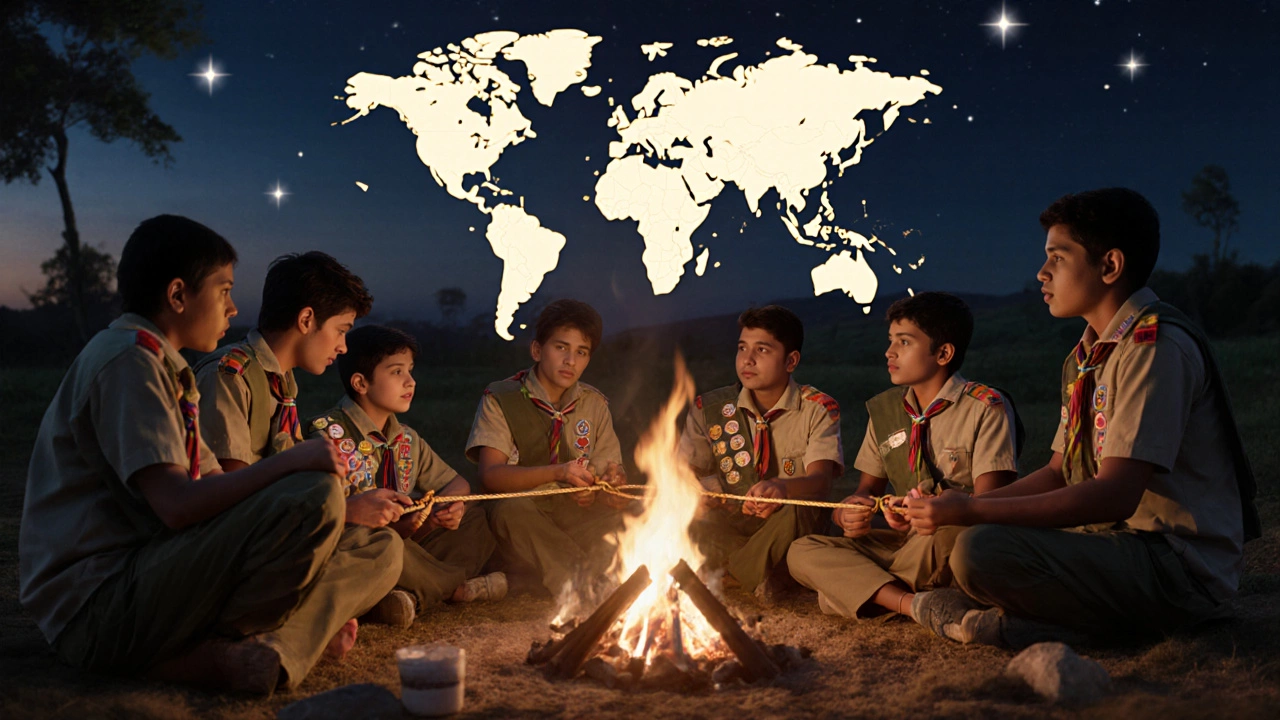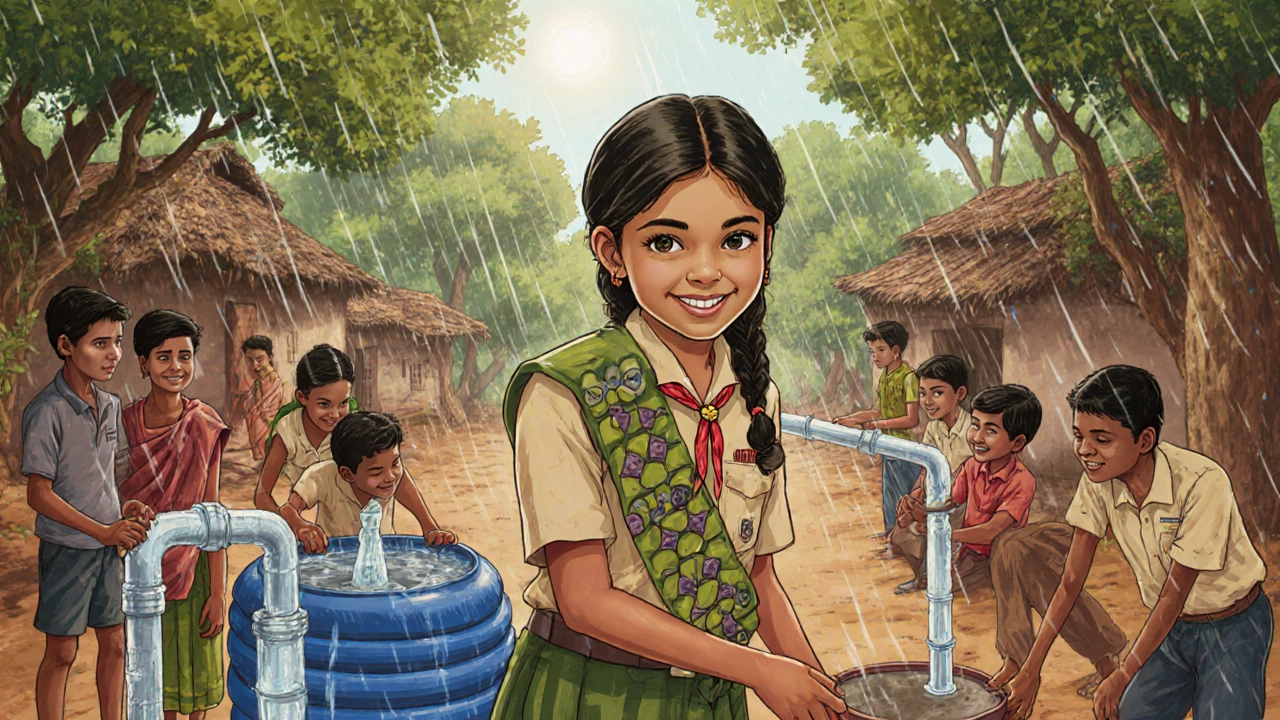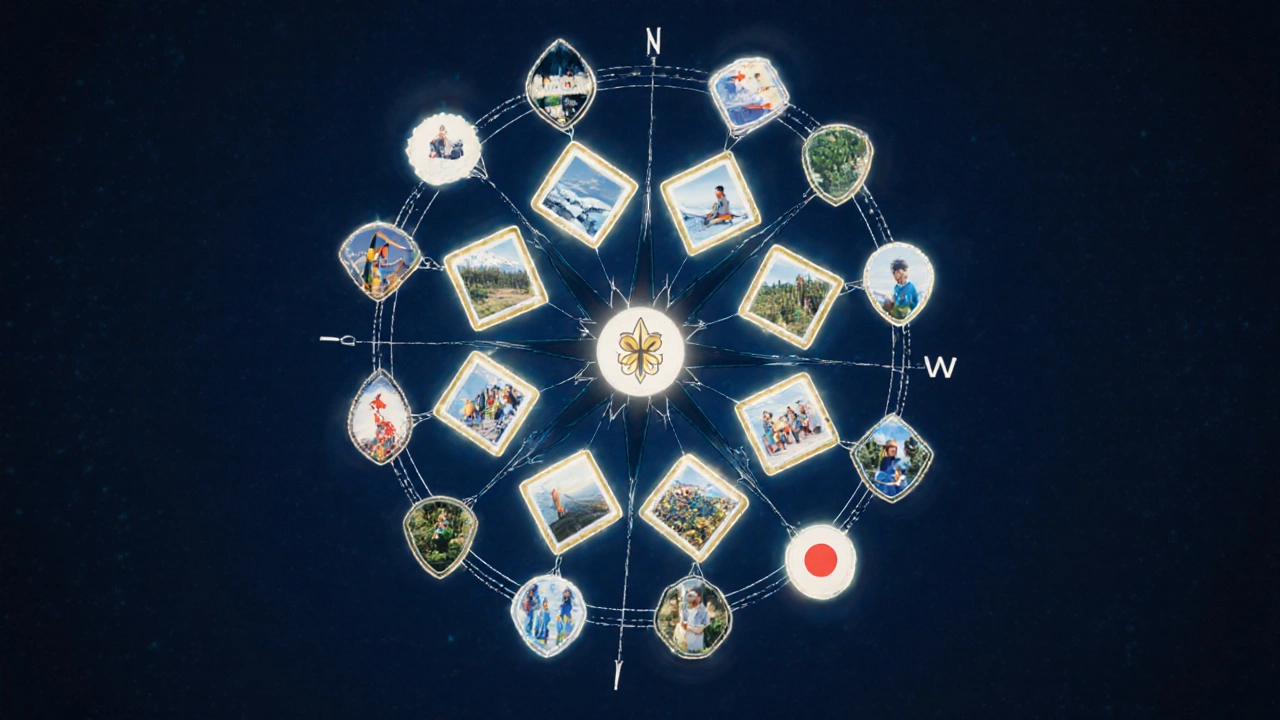What Is the Largest Youth Organization in the World?
 Oct, 30 2025
Oct, 30 2025
Youth Organization Comparison Tool
Compare Youth Organizations
Comparison Results
When you think of youth organizations, you might picture local clubs, school groups, or weekend activities. But there’s one group that dwarfs them all-spanning continents, languages, and cultures. It’s not a tech startup or a social media trend. It’s a century-old movement that has reached over 50 million young people across more than 170 countries. That’s more than the entire population of Australia. The largest youth organization in the world is the World Organization of the Scout Movement (WOSM), which includes the Boy Scouts and similar programs worldwide.
How Big Is the World Organization of the Scout Movement?
As of 2025, WOSM reports 57 million members across 176 countries. That’s not just a big number-it’s bigger than the combined membership of the next three largest youth organizations. The organization includes both boys and girls, though historically it was male-focused. Since the 1990s, most national Scout associations have opened membership to girls, and today, nearly 40% of Scouts globally are female.
The numbers don’t lie. Compare that to the Girl Guides and Girl Scouts, which together have about 10 million members. Or the 4-H clubs in the U.S., which reach around 6 million youth annually. Even the YMCA’s youth programs, which operate in 120 countries, serve roughly 15 million young people total-still less than half of WOSM’s reach.
What makes this possible? It’s not funding or celebrity endorsements. It’s structure. Every country has its own national Scout association, but they all follow the same core principles: outdoor skills, leadership training, community service, and personal responsibility. These aren’t optional extras-they’re built into every badge, camp, and meeting.
How Did the Scouts Become So Large?
The story starts in 1907, when Robert Baden-Powell, a British army officer, held the first experimental Scout camp on Brownsea Island in England. He took 20 boys from different backgrounds and taught them survival skills, observation, and teamwork. The experiment was a hit. By 1908, his book Scouting for Boys had sold over a million copies. Boys started forming their own patrols without any adult supervision.
Within ten years, Scouting had spread to Canada, Australia, India, and South Africa. It grew because it was simple, adaptable, and gave young people real responsibility. In colonial territories, local leaders took the model and made it their own-adding cultural traditions, local languages, and community needs. In post-war Europe, Scouts became a way for children to rebuild social ties. In developing nations, they became a source of education where schools were scarce.
Unlike school clubs or sports teams, Scouts don’t require expensive equipment or facilities. A compass, a notebook, and a willingness to learn are enough. That’s why it thrives in rural villages, refugee camps, and remote islands. In places where government services are weak, Scouts often step in to help with clean water projects, disaster response, and health education.
What Do Scouts Actually Do?
It’s not just camping and knot-tying. While outdoor skills are a big part, the real focus is on character development. Each country designs its own program, but all follow the Scout Promise and Law. These aren’t just slogans-they’re daily guides.
Here’s what a typical Scout does in a year:
- Completes at least three community service projects
- Learned how to read a map and navigate without GPS
- Helped build a rainwater collection system in their village
- Learned basic first aid and administered it during a local emergency
- Spent 10+ nights camping under the stars
- Worked with peers to plan and lead a local environmental clean-up
In Uganda, Scouts run literacy programs for children who don’t have access to schools. In Japan, they partner with local governments to teach earthquake preparedness. In Brazil, Scouts help reduce youth violence by offering alternatives to gangs through mentorship and skill-building.
The organization doesn’t push religion, politics, or ideology. It focuses on universal values: trustworthiness, loyalty, helpfulness, and respect. That’s why it’s accepted in countries with strict government controls-because it doesn’t threaten authority. It builds citizens, not rebels.

How Does It Compare to Other Global Youth Groups?
WOSM isn’t the only big player. But it’s the only one that’s truly global in scale and consistency.
| Organization | Estimated Membership | Global Reach | Core Focus |
|---|---|---|---|
| World Organization of the Scout Movement (WOSM) | 57 million | 176 countries | Outdoor skills, leadership, service |
| World Association of Girl Guides and Girl Scouts (WAGGGS) | 10 million | 150 countries | Girl empowerment, life skills, advocacy |
| YMCA | 15 million (all ages) | 120 countries | Health, education, community development |
| 4-H (USA and international chapters) | 6 million | 80+ countries | Agriculture, STEM, citizenship |
| Junior Chamber International (JCI) | 200,000 | 120 countries | Youth leadership, business, civic action |
WAGGGS is the only other organization that comes close in terms of international structure. But its membership is less than one-fifth of WOSM’s. The YMCA and 4-H are massive in their own right, but they don’t have the same uniform structure or the same level of youth-led activity. In Scouting, it’s the kids who plan the activities-not adults. That’s why it lasts.
Why Does This Matter Today?
In a world where young people spend more time scrolling than doing, Scouting offers something rare: real-world experience with real consequences. No algorithm decides if you pass your first-aid test. No like button validates your campfire leadership. You either know how to build a fire, or you don’t. You either help your team carry the tent, or you leave it behind.
Studies from the University of Cambridge and the University of Melbourne show that Scouts are more likely to volunteer as adults, have higher self-esteem, and report stronger problem-solving skills. A 2023 survey of 10,000 former Scouts across Europe and North America found that 78% said their Scouting experience helped them get their first job.
It’s not about badges or uniforms. It’s about learning how to lead without being told. How to care for others without reward. How to survive-not just physically, but emotionally and socially.

Can You Join Today?
Yes. If you’re between 6 and 25, you can join. There’s no cost barrier in most countries-many programs are free or donation-based. In low-income regions, uniforms are made from recycled materials, and camps are held in community centers or schools.
To find your local group, search for “Scouts [your country]” or visit the WOSM website. You don’t need to be athletic, wealthy, or fluent in English. You just need to be willing to try. Whether you live in Tokyo, Nairobi, or Melbourne, there’s a group waiting for you.
What’s Next for the Largest Youth Organization?
WOSM isn’t resting. It’s adapting. Climate action is now part of every Scout’s curriculum. Digital safety and mental health awareness are being integrated into training. More girls than ever are becoming leaders-some even run entire national associations.
The organization’s goal by 2030? To reach 100 million young people. Not by forcing growth, but by empowering local communities to lead. Because that’s what Scouting has always been about: not the size of the group, but the strength of each individual in it.
Is the Boy Scouts the largest youth organization in the world?
Yes, but not just the Boy Scouts. The World Organization of the Scout Movement (WOSM) includes all national Scout associations-including Girl Scouts, co-ed groups, and local variations. Together, they make up the largest youth organization on Earth, with 57 million members across 176 countries as of 2025.
Are Girl Guides part of the largest youth organization?
Girl Guides and Girl Scouts belong to a separate global body called WAGGGS, which has about 10 million members. While WAGGGS is large and influential, it’s not as big as WOSM. However, many countries now have unified Scout associations that include both boys and girls under one program, so the lines are blurring.
Is Scouting still relevant in the 2020s?
Absolutely. While digital life dominates, Scouting offers hands-on, real-world skills that tech can’t replace-like building a fire, navigating without GPS, or leading a team in a crisis. A 2023 study found that former Scouts are 30% more likely to volunteer regularly as adults. The organization has also added modern topics like climate action, mental health, and digital citizenship to its curriculum.
Can you join Scouting if you’re not from a Western country?
Yes. Scouting exists in every continent, including countries like Afghanistan, Papua New Guinea, and Cuba. Local associations adapt the program to fit cultural norms, languages, and needs. In some places, Scouts help deliver vaccines or teach literacy. The program is designed to be flexible, not imported.
Do you have to pay to join Scouting?
In most countries, fees are low or waived entirely. Many programs rely on donations or community support. In low-income areas, uniforms are made from reused fabric, and camps are held in schools or public parks. The goal is access, not profit.